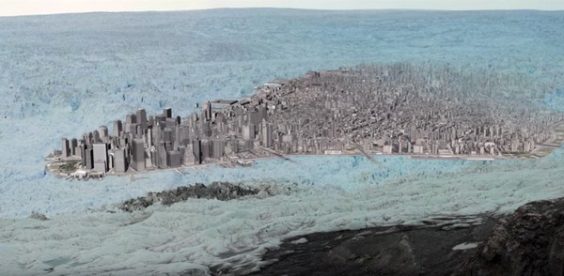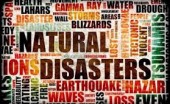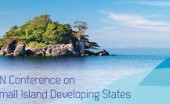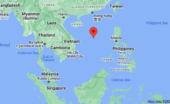Re Ian Bremmer 'Could third-party candidates upend the 2024 US election?' 3 April The current political movement in the USA…
Climate change, uncertainty & security 2017 – 2019
Written by Diana Thebaud Nicholson // March 22, 2019 // Climate Change // Comments Off on Climate change, uncertainty & security 2017 – 2019
Katowice Climate Change Conference
Midwest floods foreshadow national security threat posed by climate change
(PBS) OFFUTT AIR FORCE BASE, Neb. — The Missouri River floodwater surging on to the air base housing the U.S. military’s Strategic Command overwhelmed round-the-clock sandbagging by airmen and others. They had to scramble to save sensitive equipment, munitions and dozens of aircraft.
Days into the flooding, muddy water was still lapping at almost 80 flooded buildings at Nebraska’s Offutt Air Force Base, some inundated by up to 7 feet of water. Piles of waterlogged corn cobs, husks and stalks lay heaped everywhere that the water had receded, swept onto the base from surrounding fields.
Though the headquarters of Strategic Command, which plays a central role in detecting and striking at global threats, wasn’t damaged, the flooding provided a dramatic example of how climate change poses a national security threat, even as the Trump administration plays down the issue.
It is also a reminder that the kind of weather extremes escalating with climate change aren’t limited to the coasts, said retired Rear Adm. David W. Titley, founder of both the Navy’s Task Force on Climate Change and the Center for Solutions to Weather and Climate Risk at Penn State University.
It would takes weeks or more for scientists to determine if the Plains flooding, or any weather disaster, was caused or worsened by climate change, which is occurring as emissions from coal, oil and gas alter the atmosphere. But federal agencies and scientists around the world agree that climate change already is making natural disasters more frequent, stronger and longer.
The military has warned in a series of reports under past administrations that climate change is a security threat on many fronts. That includes “through direct impacts on U.S. military infrastructure and by affecting factors, including food and water availability, that can exacerbate conflict outside U.S. borders,” the federal government’s grim climate report said last year.
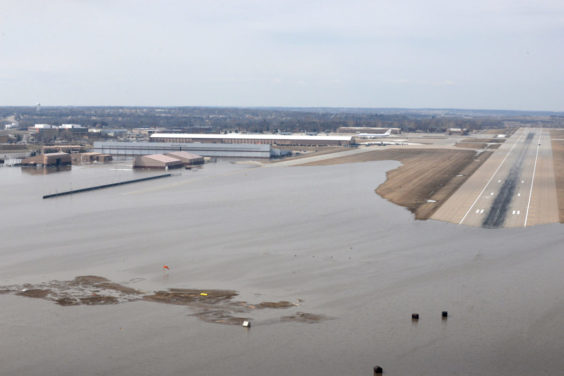
FILE PHOTO: Offutt Air Force Base and the surrounding areas affected by flood waters are seen in this aerial photo taken in Nebraska, U.S., on March 16, 2019. Picture taken on March 16, 2019. Courtesy Rachelle Blake/U.S. Air Force/Handout via REUTERS ATTENTION EDITORS – THIS IMAGE HAS BEEN SUPPLIED BY A THIRD PARTY./File Photo
7 March
Despite What Trump Says, Climate Change Threatens Our National Security
The president is trying to subvert the science that informs the intelligence community.
By John R. Allen and David G. Victor
(NYT) Once again, the Trump White House is publicly crossing swords with the intelligence community in ways that are likely to harm American security. The latest salvo is an effort taking shape over the next few weeks to “red team” the science of climate change — in effect, to challenge it and investigate it for uncertainties. The backdrop for the scheme is President Trump publicly questioning the accuracy of the nation’s most extensive and scientifically robust assessment by 13 federal agencies that showed how stronger storms, higher sea levels, more heat waves and sundry other effects of climate change will harm the nation. This same science has also informed a new intelligence community report that identifies climate change as a significant threat to national security.
Ignoring the anti-science noise in the White House is dangerous for the nation. Climate change is arguably America’s and its allies’ longest-term security crisis. But the immediate national security crisis is a White House browbeating our scientific and intelligence community into its political line or seeking to tamper with the science and intelligence itself.
25 February
Evidence for man-made global warming hits ‘gold standard’: scientists
“Humanity cannot afford to ignore such clear signals,” the U.S.-led team wrote in the journal Nature Climate Change of satellite measurements of rising temperatures over the past 40 years.
They said confidence that human activities were raising the heat at the Earth’s surface had reached a “five-sigma” level, a statistical gauge meaning there is only a one-in-a-million chance that the signal would appear if there was no warming.
Monday’s findings, by researchers in the United States, Canada and Scotland, said evidence for global warming reached the five sigma level by 2005 in two of three sets of satellite data widely used by researchers, and in 2016 in the third.
14 February
Australia’s Burning, Flooding, Disastrous New Normal
We are a land of proudly resilient people. But in an age of climate change, we can’t just hike up our Stubbies and move on.
By Kim Mahood
(NYT op-ed) We have moved into a new age of climate volatility. According to the 2018 State of the Climate Report, compiled by the Australian Government Bureau of Meteorology and the Commonwealth Scientific and Industrial Research Organization, Southern Hemisphere oceans are absorbing most of the extra heat generated by global warming. Sea surface temperatures in the Australian region have risen around one degree Celsius since 1910, with eight of the 10 warmest years on record occurring since 2005. The starkest evidence is the rate of warming in the seas around Tasmania, which is occurring at more than twice the global average. Records reveal an equivalent one-degree rise in land temperatures, accompanied by a steady shift in rainfall patterns, with rainfall increasing in northern Australia, while the south becomes more prone to drought. Prolonged periods of high temperatures are much more frequent, and bushfire seasons are longer.
27 January
The New Language of Climate Change
(Politico) Scientists and meteorologists on the front lines of the climate wars are testing a new strategy to get through to the skeptics and outright deniers.
The hope is to convince the small but powerful minority that stands in the way of new policies to help mitigate climate change’s worst long-term effects—as well as the people who vote for them—that something needs to be done or their own livelihoods and health will be at stake.
The new language taking root is meant to instill this sense of urgency about what is happening in ways that everyday citizens can relate to—without directly blaming it on human activity: The spring blossoms keep coming earlier. Seasonal allergies are worse and lasting longer. The extreme heat is upending the kids’ summer camp schedule. Local crops are drying up or washing away at alarming rates
20 January
There’s Snow on TV, so Trump’s Tweeting About Climate Change
Alas, a brief cold spell does not undo decades of scientific fact.
(The Atlantic) The past four years have been the four warmest years on record—a fact that NASA and the National Oceanic and Atmospheric Administration were due to announce this past week, were the government not shut down. Earlier this winter, Washington, D.C., experienced a shocking 22 days of above-average temperatures, and the Northeast as a whole saw a balmy January. President Trump did not seize that opportunity to affirm that global warming was real.
The simple, tedious fact is that two things can be true at the same time: The world’s average temperature can be clearly and dangerously increasing, and it can still snow sometimes in the northeastern United States. Climate emerges from averages, and the averages are unambiguous. Snowpack and ice cover are decreasing, especially in the Mountain West. The Great Lakes’ winter-ice cover has declined by 71 percent over the past 40 years. The average time between the last frost of spring and the first frost of fall has increased in every region of the country since the early-20th century. …facts, alas, keep being true whether you believe in them or not. It is dangerously icy in the Northeast, and by all means local residents should stay inside. But a brief cold spell does not undo decades of scientific fact.
2018
30 December
David Leonhardt: The Story of 2018 Was Climate Change
Future generations may ask why we were distracted by lesser matters.
(NYT) … the weather still has one big advantage over every other argument about the urgency of climate change: We experience the weather. We see it and feel it.
It is not a complex data series in an academic study or government report. It’s not a measurement of sea level or ice depth in a place you’ve never been. It’s right in front of you. And although weather patterns do have a lot of randomness, they are indeed changing. That’s the thing about climate change: It changes the climate.
The story of climate change in 2018 was complicated — overwhelmingly bad, yet with two reasons for hope. The bad and the good were connected, too: Thanks to the changing weather, more Americans seem to be waking up to the problem.
I’ll start with the alarming parts of the story. The past year is on pace to be the earth’s fourth warmest on record, and the five warmest years have all occurred since 2010. This warming is now starting to cause a lot of damage.
In 2018, heat waves killed people in Montreal, Karachi, Tokyo and elsewhere. Extreme rain battered North Carolina and the Indian state of Kerala. The Horn of Africa suffered from drought. Large swaths of the American West burned. When I was in Portland, Ore., this summer, the air quality — from nearby wildfires — was among the worst in the world. It would have been healthier to be breathing outdoors in Beijing or Mumbai.
As for the two main reasons for hope: The first is that the Trump administration is an outlier. Most major governments are trying to slow climate change. So are many states in this country, as well as some big companies and nonprofit groups. This global coalition is the reason that the recent climate summit in Poland “yielded much more,” as Nat Keohane of the Environmental Defense Fund said, “than many of us had thought might be possible.”
The second reason for hope is public opinion. No, it isn’t changing nearly as rapidly as I wish. Yet it is changing, and the weather seems to be a factor. The growing number of extreme events — wildfires, storms, floods and so on — are hard to ignore.
15 December
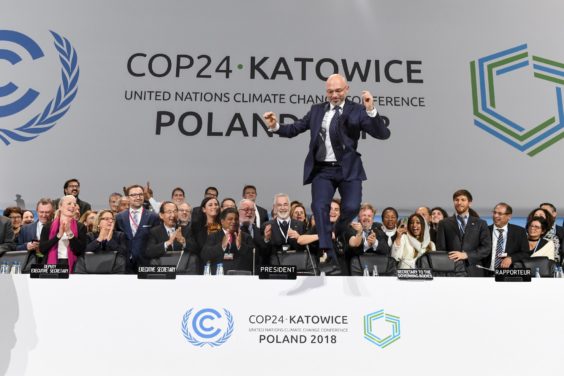 Michal Kurtyka, president of the climate talks in Katowice, Poland, leapt over his desk as the final session ended. CreditJanek Skarzynski/Agence France-Presse — Getty Images
Michal Kurtyka, president of the climate talks in Katowice, Poland, leapt over his desk as the final session ended. CreditJanek Skarzynski/Agence France-Presse — Getty Images
Climate Negotiators Reach an Overtime Deal to Keep Paris Pact Alive
(NYT) Diplomats from nearly 200 countries reached a deal on Saturday to keep the Paris climate agreement alive by adopting a detailed set of rules to implement the pact.
The deal, struck after an all-night bargaining session, will ultimately require every country in the world to follow a uniform set of standards for measuring their planet-warming emissions and tracking their climate policies. And it calls on countries to step up their plans to cut emissions ahead of another round of talks in 2020.
It also calls on richer countries to be clearer about the aid they intend to offer to help poorer nations install more clean energy or build resilience against natural disasters. And it builds a process in which countries that are struggling to meet their emissions goals can get help in getting back on track.
Observers said United States negotiators worked constructively behind the scenes with China on transparency rules. The two countries had long been at odds because China had insisted on different reporting rules for developing countries, while the United States favored consistent emissions-accounting rules and wanted all countries to be subject to the same outside scrutiny.
“The U.S. got a clear methodology to make sure that China and India are meeting their targets,” said Jake Schmidt, international policy director at the Natural Resources Defense Council. “That creates the level playing field they have been asking for.”
Many of the attendees at this year’s United Nations climate talks — known as COP24, shorthand for their formal name — expressed disappointment at what they saw as half measures to deal with a mounting climate crisis. Greenhouse gas emissions are still rising around the world, and millions of people are facing increased risks from severe droughts, floods and wildfires.
But supporters of the deal reached Saturday said that they hoped the new rules would help build a virtuous cycle of trust and cooperation among countries, at a time when global politics seems increasingly fractured.
2 – 14 December 2018
(New York) Wake-up Call of the Week: The cost of inaction of climate change — “annual deadly heat waves and widespread famine, tens of millions of climate refugees, global coastal flooding” — is unthinkable. So even those who count themselves among the enlightened “choose, most of the time, not to think about it,” David Wallace-Wells writes in “You, Too, Are in Denial of Climate Change.” The “hard-core, bought-and-paid-for” deniers may be the most pernicious, but they’re not the only ones with their head in the sand. Even those who believe the science tend to think “climate change will only hit elsewhere, or only in the future,” which is itself a form of denialism. Unfortunately, “simple belief in climate change is not enough.”
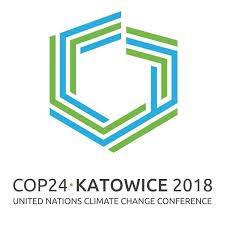 10 December
10 December
U.S. Stands with Russia and Saudi Arabia Against Climate Science
At a meeting to coordinate climate action, the nations thwarted recognition of a recent report expressing the urgency of reducing emissions
(Scientific American) The three countries and Kuwait blocked nearly 200 nations involved in the U.N. Framework Convention on Climate Change from “welcoming” a U.N. report in October saying that “unprecedented” action is required to keep warming to 1.5 degrees Celsius and stave off worldwide hardship.
Vulnerable island nations and other developing countries tried to elevate the 1.5 C goals with the type of diplomatic subtlety these talks are known for. But welcoming the report was too strong a message for the United States and other nations that oppose climate action.
Experts here say poor countries and their allies won’t rest until the 1.5 C report gets the recognition it deserves, and predicted the issue would resurface later this week when it comes time to negotiate the meeting’s final decision. Nor is it only developing countries that see it as important. Elina Bardram, head of international relations for the European Commission, said the Conference of the Parties (COP) must not only acknowledge the report but also grapple with how to ensure Paris implementation responds to it.
Australia’s silence during climate change debate shocks COP24 delegates
Country accused of tacitly supporting oil allies’ rejection of the latest science
(The Guardian) As four of the world’s largest oil and gas producers blocked UN climate talks from “welcoming” a key scientific report on global warming, Australia’s silence during a key debate is being viewed as tacit support for the four oil allies: the US, Saudi Arabia, Russia and Kuwait.
Most of the world’s countries spoke out in fierce opposition to the oil allies’ position.
3 December
COP24: green, gender focus, as UN’s crucial climate change conference gets underway
(UN News) Days after the UN sounded the alarm on the unprecedented levels of greenhouse gas concentrations in the atmosphere, the world is gathering to define how the 2015 Paris Agreement will be implemented and moved forward.
This 24th COP will be hosting over 28,000 people. The figure includes: close to 13,000 people with the parties to the UNFCCC gathering to negotiate the Paris Agreement work programme, some 450 UN staff, over 7,000 observers from non-governmental organisations, and 1,500 media representatives. In addition to over 6,000 staff, the conference is employing about 500 volunteers.
The conference space built by the Polish Government over the past six months, covers an area of close to 100,000 square meters. Nearly 2,000 people worked on its construction and outfitting.
Well over 100 events will highlight action in transport, water, land-use, energy, the fashion industry, to name a few, representing the wide spectrum of climate action. They will include CEOs, mayors, governors and other leaders from civil society at large.
COP24 Off To A Rocky Start As Previous Leaders Call For “Unequivocal Message”
However, there is still hope that this Conference will be able to solidify the guidelines necessary to fully implement the Paris Agreement of 2015 through the Paris Rulebook. It’s also important to remember that COP24 is taking place only two months after the release of the Intergovernmental Panel on Climate Change’s (IPCC) Special Report on Global Warming of 1.5°C which warned that “Limiting global warming to 1.5°C would require rapid, far-reaching and unprecedented changes in all aspects of society.”
United Nations Framework Convention on Climate Change (UNFCCC) also published a statement Sunday outlining the priorities for this year’s COP24 which includes the Talanoa Dialogue, climate action before 2020, and the Marrakech Partnership for Global Climate Action.
The UN’s Climate Change Conference is Meeting…in Poland’s Coal Country
1 December
19 of 20 World Leaders Just Pledged to Fight Climate Change. Trump Was the Lone Holdout.
“The United States reiterates its decision to withdraw from the Paris Agreement.”
(Mother Jones) It is telling that on two of the most contentious topics at the Buenos Aires Group of 20 meeting, the United States eventually joined 19 other world leaders on trade, but when it comes to climate change, President Donald Trump remained firmly alone in his belief that it is a hoax.
Trump, of course, pledged in June 2016 to withdraw from the Paris climate accord, and the United States will officially stand alone in the world in rejecting climate action when Trump can fulfill that promise formally in 2020. In the meantime, the country remains a part of the UN climate negotiations, though now more often playing the spoiler role in talks.
The rest of the text, agreed upon by the 19 countries, recognizes “that the Paris Agreement is irreversible and commit to its full implementation, reflecting common but differentiated responsibilities and respective capabilities, in light of different national circumstances. We will continue to tackle climate change, while promoting sustainable development and economic growth.”
23 November
Federal Climate Report Predicts At Least 3 Degrees Of Warming By 2100
The White House’s decision to release the report over the holiday weekend is likely to bury the sobering new findings
2 November
Rebellious Scientists Issue Urgent Appeal
by Robert Hunziker
(Counterpunch) On October 31st a select group of UK scientists launched a Declaration of Rebellion against the UK government at the Houses of Parliament: “For criminal inaction in the face of climate change catastrophe and ecological collapse.”
According to the scientists, now is the time to act as a planetary emergency is already upon us.
Nearly 100 British scientists, academics, and writers are willing to go to jail to make their point that anthropogenic (human-caused) climate change is a surefire provocateur that’s already starting to decimate ecosystems.
“This is almost a cry of desperation,” says Andrew Simms of the New Weather Institute (Source: Alex Kirby, UK Scientists Risk Prison to Urge Action, Climate News Network, Oct. 31, 2018).
Additionally, effective October 31, ExtinctionRebellion launched an international movement that will use mass civil disobedience to force governments to immediately establish a WWII-type effort to fight climate change.
11 October
Billionaires Are the Leading Cause of Climate Change
As the world faces environmental disaster on a biblical scale, it’s important to remember exactly who brought us here.
(GQ) The real impact comes on the industrial level, as more than 70 percent of global emissions come from just 100 companies. So you, a random American consumer, exert very little pressure here. The people who are actively cranking up the global thermostat and threatening to drown 20 percent of the global population are the billionaires in the boardrooms of these companies.
There are probably no individuals who have had a more toxic impact on public and political attitudes about climate change than the Koch brothers, and it would take an absurd amount of space to document all the money and organizations they’ve scraped together for that purpose. (Investigative reporter Jane Mayer’s groundbreaking Dark Money does basically that.) And they have every reason to: In her book, Mayer notes that “Koch Industries alone routinely released some 24 million tons of carbon dioxide into the atmosphere a year.”
But the scope goes far beyond merely sowing dissent and skepticism. While billionaires and the companies they run have spent years insisting that climate change either doesn’t exist or is overblown, they’ve known the reality of the situation for a long time. PayPal cofounder Peter Thiel, for example, used to donate to the Seasteading Institute, which aimed to build floating cities in order to counteract rising sea levels. And Exxon Mobil allegedly knew about climate change in 1977, back when it was still just Exxon and about 11 years before climate change became widely talked about. Instead of acting on it, they started a decades-long misinformation campaign. According to Scientific American, Exxon helped create the Global Climate Coalition, which questioned the scientific basis for concern over climate change from the late ’80s until 2002, and successfully worked to keep the U.S. from signing the Kyoto Protocol, a move that helped cause India and China, two other massive sources of greenhouse gas, to avoid signing.
10 October
UN Says Climate Genocide Is Coming. It’s Actually Worse Than That.
(New York) The alarming new report you may have read about this week from the UN’s Intergovernmental Panel on Climate Change — which examines just how much better 1.5 degrees of warming would be than 2 — echoes the charge. “Amplifies” may be the better term. Hundreds of millions of lives are at stake, the report declares, should the world warm more than 1.5 degrees Celsius, which it will do as soon as 2040, if current trends continue. Nearly all coral reefs would die out, wildfires and heat waves would sweep across the planet annually, and the interplay between drought and flooding and temperature would mean that the world’s food supply would become dramatically less secure. Avoiding that scale of suffering, the report says, requires such a thorough transformation of the world’s economy, agriculture, and culture that “there is no documented historical precedent.”
As recently as a year ago, when I published a magazine cover story exploring worst-case scenarios for climate change, alarmism of this kind was considered anathema to many scientists, who believed that storytelling that focused on the scary possibilities was just as damaging to public engagement as denial. There have been a few scary developments in climate research over the past year — more methane from Arctic lakes and permafrost than expected, which could accelerate warming; an unprecedented heat wave, arctic wildfires, and hurricanes rolling through both of the world’s major oceans this past summer. But by and large the consensus is the same: We are on track for four degrees of warming, more than twice as much as most scientists believe is possible to endure without inflicting climate suffering on hundreds of millions or threatening at least parts of the social and political infrastructure we call, grandly, “civilization.” The only thing that changed, this week, is that the scientists, finally, have hit the panic button.
At two degrees, the melting of ice sheets will pass a tipping point of collapse, flooding dozens of the world’s major cities this century. At that amount of warming, it is estimated, global GDP, per capita, will be cut by 13 percent. Four hundred million more people will suffer from water scarcity, and even in the northern latitudes heat waves will kill thousands each summer. It will be worse in the planet’s equatorial band. In India, where many cities now numbering in the many millions would become unliveably hot, there would be 32 times as many extreme heat waves, each lasting five times as long and exposing, in total, 93 times more people. This is two degrees — practically speaking, our absolute best-case climate scenario.
At three degrees, southern Europe will be in permanent drought. The average drought in Central America would last 19 months and in the Caribbean 21 months. In northern Africa, the figure is 60 months — five years. The areas burned each year by wildfires would double in the Mediterranean and sextuple in the United States. Beyond the sea-level rise, which will already be swallowing cities from Miami Beach to Jakarta, damages just from river flooding will grow 30-fold in Bangladesh, 20-fold in India, and as much as 60-fold in the U.K. This is three degrees — better than we’d do if all the nations of the world honored their Paris commitments, which none of them are. Practically speaking, barring those dramatic tech deus ex machinas, this seems to me about as positive a realistic outcome as it is rational to expect.
At four degrees, there would be eight million cases of dengue fever each year in Latin America alone. Global grain yields could fall by as much as 50 percent, producing annual or close-to-annual food crises. The global economy would be more than 30 percent smaller than it would be without climate change, and we would see at least half again as much conflict and warfare as we do today. Possibly more. Our current trajectory, remember, takes us higher still, and while there are many reasons to think we will bend that curve soon — the plummeting cost of renewable energy, the growing global consensus about phasing out coal — it is worth remembering that, whatever you may have heard about the green revolution and the price of solar, at present, global carbon emissions are still growing.
8 October
Nobel Prize-winning economist says carbon taxes are the solution to climate change
‘The problem is not knowing what to do,’ says Paul Romer, ‘The problem is getting a consensus to act’
(CBC Radio transcript) Just hours before William Nordhaus and Paul Romer won a Nobel Prize on Monday for their work on the economics of climate change, the UN issued a dire warning about global warming. The report from the Intergovernmental Panel on Climate Change says that an extra single degree of heat could make a life-or-death difference in the next few decades for multitudes of people and ecosystems on this fast-warming planet. But Romer — whose work focuses on adapting economic theory to take better account of environmental issues and technological progress — says this crisis can easily be averted through economic policy.
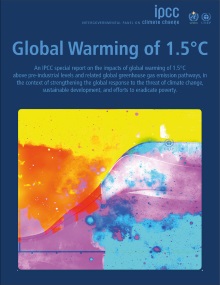 Climate change impacts worse than expected, global report warns
Climate change impacts worse than expected, global report warns
The Intergovernmental Panel on Climate Change says the world is headed for painful problems sooner than expected, as emissions keep rising.
(National Geographic) The impacts and costs of 2.7 degrees Fahrenheit (1.5 degrees Celsius) of global warming will be far greater than expected, according to a comprehensive assessment by the Intergovernmental Panel on Climate Change (IPCC) released Sunday in Incheon, South Korea.
The past decade has seen an astonishing run of record-breaking storms, forest fires, droughts, coral bleaching, heat waves, and floods around the world with just 1.8 degrees Fahrenheit (1.0 degrees Celsius) of global warming. [See: Hidden Costs of Climate Change Running Hundreds of Billions a Year] But much of this will get substantially worse with 2.7 degrees Fahrenheit of warming, and far worse at 3.6 degrees Fahrenheit (2 degrees Celsius), according to the IPCC’s “Special Report on Global Warming of 1.5°C”, released Sunday and examining more than 6,000 studies.
Planet has only until 2030 to stem catastrophic climate change, experts warn
By Brandon Miller and Jay Croft,
(CNN) Governments around the world must take “rapid, far-reaching and unprecedented changes in all aspects of society” to avoid disastrous levels of global warming, says a stark new report from the global scientific authority on climate change.
The report issued Monday by the UN Intergovernmental Panel on Climate Change (IPCC), says the planet will reach the crucial threshold of 1.5 degrees Celsius (2.7 degrees Fahrenheit) above pre-industrial levels by as early as 2030, precipitating the risk of extreme drought, wildfires, floods and food shortages for hundreds of millions of people.
The date, which falls well within the lifetime of many people alive today, is based on current levels of greenhouse gas emissions.
Major Climate Report Describes a Strong Risk of Crisis as Early as 2040
(NYT) A landmark report from the United Nations’ scientific panel on climate change paints a far more dire picture of the immediate consequences of climate change than previously thought and says that avoiding the damage requires transforming the world economy at a speed and scale that has “no documented historic precedent.”
The report, issued on Monday by the Intergovernmental Panel on Climate Change, a group of scientists convened by the United Nations to guide world leaders, describes a world of worsening food shortages and wildfires, and a mass die-off of coral reefs as soon as 2040 — a period well within the lifetime of much of the global population.
15 September
Cleo Paskal: Climate disruptions are also about politics and economics, as about environment
(Sunday Guardian) Yes, climate change is a serious challenge. And it is combining with other aspects of environmental change, as well as politics and economics, to trigger increasingly disruptive events. All three must be understood and addressed together if we are going to achieve anything close to security, let alone prosperity.
We need to look at insurance, zoning, locations of critical infrastructure and more, and over a much longer time frame, to understand what kind of risk we are creating. Otherwise, our world will be filled with many more Florences.
11 September
Floods and Droughts: As climate change exacerbates water and other resource shortages, the crisis Cape Town was forced to reckon with this summer foreshadows emergencies in cities all around the world, Vann R. Newkirk II reports. In the United States, Hurricane Florence is predicted to make landfall in North or South Carolina on Thursday, and could lead to dangerous flooding similar to what Houston suffered due to Hurricane Harvey last year. Elsewhere, melting glaciers are hitting tourists.
28 August
The Global Rightward Shift on Climate Change
President Trump may be leading the rich, English-speaking world to scale back environmental policies.
(The Atlantic) Moderate national leaders—on both the center-left and center-right—in some of the world’s richest and most advanced countries are finding it far easier to talk about climate change than to actually fight it.
At a basic level, this pattern holds up, well, everywhere. Every country except the United States supports the Paris Agreement on climate change. But no major developed country is on track to meet its Paris climate goals, according to the Climate Action Tracker, an independent analysis produced by three European research organizations. Even Germany, Japan, and the United Kingdom—where right-wing governments have made combatting climate change a national priority—seem likely to miss their goals.
Simply put: This kind of failure, writ large, would devastate Earth in the century to come. The world would blow its stated goal of limiting atmospheric temperature rise. Heatwaves might regularly last for six punishing weeks, sea levels could soar by feet in a few short decades, and certain fragile ecosystems—like the delicate Arctic permafrost or the kaleidoscopic plenty of coral reefs—would disappear from the planet entirely.
22 August
The Victims of Climate Change Are Already Here
(The Atlantic)With a new global summit approaching, communities in the southern United States are calling attention to the disaster scenarios they currently face.
In the new global reality, where each passing year is the hottest on record, the final month of summer foretells calamity. It’s always hot and volatile in the dog days between mid-August and mid-September, but the past few years have dialed those elements up high. Heat waves, droughts, storms, floods, and other extreme events have garnered increasing attention. The largest wildfire in California’s history is now raging almost a year after the previous record holder hit the state. Hurricanes Harvey and Irma ravaged the Gulf Coast and Florida in late August last year. Hurricane Maria became the second-most deadly natural disaster in contemporary American history when it passed over Puerto Rico last September. And the 13th anniversary of the Louisiana landfall of Hurricane Katrina, the largest such storm, is on August 29.
15 August
U.S. $23 trillion will be lost if temperatures rise four degrees by 2100
(Phys.org) Imagine something similar to the Great Depression of 1929 hitting the world, but this time it never ends.
Economic modelling suggests this is the reality facing us if we continue emitting greenhouse gases and allowing temperatures to rise unabated.
Economists have largely underestimated the global economic damages from climate change, partly as a result of averaging these effects across countries and regions, but also because the likely behaviour of producers and consumers in a climate change future isn’t usually taken into consideration in climate modelling. … The severe falls in GDP in the long term will put many governments under fiscal stress, since tax revenues are tied to GDP or national income levels. Tax revenues will fall dramatically.In addition, if global warming is linked to increases in the frequency of weather events and other natural disasters, which invoke significant emergency management responses and expenditures, the pressure on government budgets will be even more severe.
Many governments around the global won’t be able to cope and will, to put it simply, fail. 15 August 2018
1 August
We’ve reached a milestone in our demand for Earth’s natural resources, and it could have major consequences
This year’s Earth Overshoot Day falls on August 1, the earliest it has ever been.
Renewable natural resources are being consumed 1.7 times faster than they can regenerate, according to the Global Footprint Network.
Losing Earth: The Decade We Almost Stopped Climate Change
By Nathaniel Rich
Editor’s Note
This narrative by Nathaniel Rich is a work of history, addressing the 10-year period from 1979 to 1989: the decisive decade when humankind first came to a broad understanding of the causes and dangers of climate change. Complementing the text is a series of aerial photographs and videos, all shot over the past year by George Steinmetz. With support from the Pulitzer Center, this two-part article is based on 18 months of reporting and well over a hundred interviews. It tracks the efforts of a small group of American scientists, activists and politicians to raise the alarm and stave off catastrophe. It will come as a revelation to many readers — an agonizing revelation — to understand how thoroughly they grasped the problem and how close they came to solving it. – Jake Silverstein
The Problem With The New York Times’ Big Story on Climate Change
By portraying the early years of climate politics as a tragedy, the magazine lets Republicans and the fossil-fuel industry off the hook.
By Robinson Meyer
(The Atlantic) The New York Times Magazine has tried to make the release of its new article, which details a decade of climate history, as momentous as possible. It has devoted the entire new issue of the magazine to just this one story, which is written by Nathaniel Rich. Having read the story, I am left to wonder: What was the point?
25 April
Not exactly new news to those who have been following events in the small-island states
Climate change to drive migration from island homes sooner than thought
Low-lying atolls around the world will be overtaken by sea-level rises within a few decades, according to a new study
(The Guardian) Hundreds of thousands of people will be forced from their homes on low-lying islands in the next few decades by sea-level rises and the contamination of fresh drinking water sources, scientists have warned.
A study by researchers at the US Geological Survey (USGS), the Deltares Institute in the Netherlands and Hawaii University has found that many small islands in the Pacific and Indian Oceans will be uninhabitable for humans by the middle of this century. That is much earlier than previously thought.
Experts say the findings underline the looming climate change driven migration crisis that is predicted to see hundreds of millions of people forced from their homes in the coming years.
More than half a million people around the world live on atoll islands, often extraordinary and beautiful structures based on coral reefs. Their closeness to sea level makes them particularly vulnerable to climate change.
The increase in urgency comes because, according to the authors of the report, previous studies had been based only on predicted sea-level rises. Today’s study also examined the impact of wave driven flooding on the availability of fresh water.
31 July
China’s Love for Meat Is Threatening Its Green Movement
Even as it champions renewable energy, the country has struggled to curb a rising demand for livestock.
(The Atlantic) In the past three decades, breakneck industrial development and economic growth have driven millions of Chinese from rural areas to cities, altering much about the Chinese way of life, especially in terms of their day-to-day eating habits—an evolution perhaps most pointedly crystallized in the average Chinese consumer’s access to meat. Once a rare luxury, it has now become a commonplace. “I still remember when beef was nicknamed ‘the millionaire’s meat,’” said Zhang, who reckoned that he spends around 600 yuan, or $88, each week on food, and half of that on meat. “Now I can eat it every day if I want.”
Fueled by rising incomes rather than urbanization, meat consumption in China has grown sevenfold over the past three and a half decades. In the early 1980s, when the population was still under 1 billion, the average Chinese person ate around 30 pounds of meat a year. Today, with an additional 380 million people, it’s nearly 140 pounds. On the whole, the country consumes 28 percent of the world’s meat—twice as much as the United States. And the figure is only set to increase.
31 May
Avoiding meat and dairy is ‘single biggest way’ to reduce your impact on Earth
Biggest analysis to date reveals huge footprint of livestock – it provides just 18% of calories but takes up 83% of farmland
The study, published in the journal Science, created a huge dataset based on almost 40,000 farms in 119 countries and covering 40 food products that represent 90% of all that is eaten. It assessed the full impact of these foods, from farm to fork, on land use, climate change emissions, freshwater use and water pollution (eutrophication) and air pollution (acidification).
“A vegan diet is probably the single biggest way to reduce your impact on planet Earth, not just greenhouse gases, but global acidification, eutrophication, land use and water use,” said Joseph Poore, at the University of Oxford, UK, who led the research. “It is far bigger than cutting down on your flights or buying an electric car,” he said, as these only cut greenhouse gas emissions.
29 March
Biggest Threat to Humanity? Climate Change, U.N. Chief Says
(NYT) The United Nations secretary general, António Guterres, on Thursday called climate change “the most systemic threat to humankind” and urged world leaders to curb their countries’ greenhouse gas emissions.
He didn’t say much, though, about the one world leader who had pulled out of the landmark United Nations climate change agreement: President Trump.
Instead, Mr. Guterres suggested that Mr. Trump’s withdrawal from the Paris accord nearly a year ago didn’t matter much. The American people, he said, were doing plenty.
Mr. Guterres is planning a summit meeting next year to goad world leaders to raise their emissions reductions targets. But few countries are even close to meeting the targets they set under the Paris agreement, which was drafted in November and December in 2015, according to independent analyses.
His warnings came a week after the World Meteorological Organization, a United Nations agency, reported that a barrage of extreme weather events had made 2017 the costliest year on record for such disasters, with an estimated $320 billion in losses.
28 January
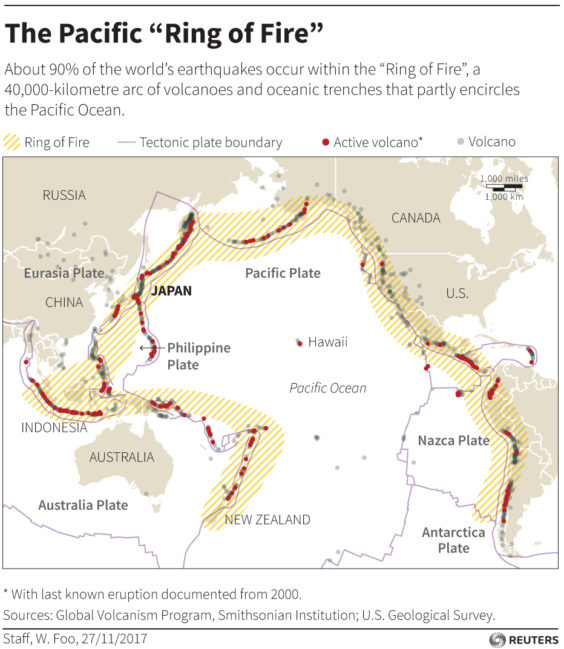 Volcanoes, earthquakes: Is the Ring of Fire alight?
Volcanoes, earthquakes: Is the Ring of Fire alight?
(Japan Today) A volcanic eruption in the Philippines forces mass evacuations, while another in Japan kills one person. Across the Pacific, a 7.9 magnitude earthquake hits off Alaska. So what’s the link?
The spate of activity around the so-called Ring of Fire has raised concerns that a major and potentially deadly volcanic eruption or earthquake could be on the way. Here is what the experts say:
The recent volcanic eruptions and earthquakes occurred along a belt that runs around the Pacific Ocean and is known as the “Ring of Fire.”
Reaching from Indonesia to the coast of Chile in a 40,000-kilometer arc, the belt is home to most of the world’s active and dormant volcanoes and is where the vast majority of earthquakes occur.
It is an interconnected circle of fault lines — cracks in the Earth’s hardened upper crust — which are under constant pressure from super-hot molten rock beneath.
The recent spectacular eruptions and earthquakes have caused some speculation about a potential “domino effect,” but experts say that simply isn’t how the Ring of Fire works.
The Ring of Fire has produced the world’s strongest recorded earthquake and volcanic eruption, but experts say the recent activity does not necessarily presage a major natural disaster.
26 January
Climate and tech pose the biggest risks to our world in 2018
Environmental risks, which have grown in prominence over the 13-year history of the Global Risks Report, are an area of particular concern. The Global Risks Report 2018 looks at five categories of environmental risks: extreme weather events and temperatures; accelerating biodiversity loss; pollution of air, soil and water; failures of climate change mitigation and adaptation; and risks linked to the transition to low carbon. All of these risks ranked highly on both dimensions of likelihood and impact.
2017
26 October
Was the Extreme 2017 Hurricane Season Driven by Climate Change?
Global warming already appears to be making hurricanes more intense
(Scientific American) Summer and fall 2017 saw an unusual string of record-breaking hurricanes pummel the U.S. Gulf Coast, eastern seaboard, Puerto Rico and the Caribbean.
Hurricane Harvey brought unbelievable floods to Houston. Irma, one of the two strongest hurricanes ever recorded in the northern Atlantic, wreaked havoc on Florida and many Caribbean islands. Maria devastated Puerto Rico and the Virgin Islands. The destruction begs the question: Has climate change influenced these extreme events? Hurricanes can be difficult to decipher, but experts are gaining a sense of what our warming world might mean for monster storms in the U.S. and worldwide.
The dynamic between storms and warming oceans occurs in part because of the role hurricanes play in our climate system: they rebalance Earth’s heat. The storms remove heat from tropical oceans in the form of moisture and pump the heat up into the atmosphere, where heat is redistributed and radiated out into space. “In some sense, hurricanes are a relief valve,” explains Kevin Trenberth, a senior scientist in the Climate Analysis Section at the National Center for Atmospheric Research. “From the climate standpoint, you need to have some hurricanes to come along and cool the ocean, to keep them at reasonable temperatures. No other phenomenon can play this role.”
8 September
A Requiem for Florida, the Paradise That Should Never Have Been
(Politico) As Hurricane Irma prepares to strike, it’s worth remembering that Mother Nature never intended us to live here.
The problem, like most problems in South Florida, is a water problem. Half the Everglades has been drained or paved for agriculture and development, so in the rainy season, water managers have to dump excess water into estuaries and what’s left of the Everglades. Then it’s no longer available in the dry season, which is why South Florida now faces structural droughts that create wildfires in the Everglades and endanger the region’s drinking water, which happens to sit underneath the Everglades. Meanwhile, the Everglades itself—once reviled as a vile backwater, now revered as an ecological treasure—has all kinds of problems of its own, including 69 endangered species. In 2000, Congress approved the largest environmental restoration project in history to try to resuscitate the Everglades, an unprecedented effort to fix South Florida’s water problems for people and farms as well as nature. But 17 years later, virtually no progress has been made. It’s a real mess.
“When the Last Tree Is Cut Down, the Last Fish Eaten, and the Last Stream Poisoned, You Will Realize That You Cannot Eat Money.”
This prophecy is becoming a more and more brutal reality.
But, even today, not every person is aware of the horrible effects our lifestyles have on nature.
27 images that are cause for concern
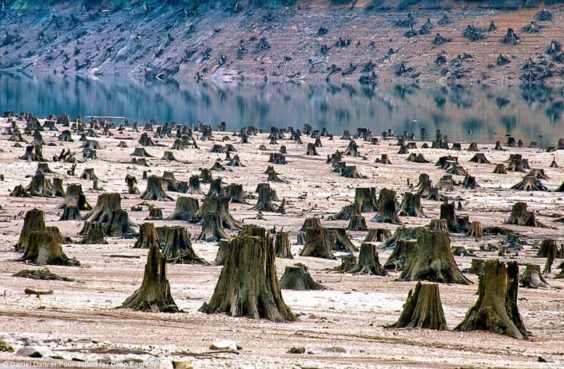 In Oregon, this thousand-year-old forest fell victim to the chain saw for a new dam.
In Oregon, this thousand-year-old forest fell victim to the chain saw for a new dam.
10 August
International report confirms 2016 was warmest year on record for the globe
Last year marked the 3rd consecutive year of record warmth
(NOAA) The 27th annual State of the Climate report has confirmed that 2016 topped 2015 as the warmest year in 137 years of record keeping. The report found that most indicators of climate change continued to follow trends of a warming world, and several, including land and ocean temperatures, sea level and greenhouse gas concentrations in the atmosphere broke records set just one year prior. Last year’s record heat resulted from the combined influence of long-term global warming and a strong El Nino early in the year.
This annual check-up for the planet, led by researchers from NOAA’s National Centers for Environmental Information, is based on contributions from more than 450 scientists from nearly 60 countries.
(The Atlantic) Climate Climax: The five biggest findings of the National Oceanic and Atmospheric Administration’s new report on 2016 weather paint a worrying picture of the state of the climate: Last year was the hottest on record, seas continued to rise, and countries around the world suffered severe drought. Al Gore’s new documentary, An Inconvenient Sequel, uses the tactics of TV shows to drive home the severity of this situation, but risks undermining some of its own calls to action. California has what might be a more effective solution in its own international climate pact, formed with several Canadian provinces—and soon, perhaps, with other U.S. states.
21 July
A new book ranks the top 100 solutions to climate change. The results are surprising.
A chat with Paul Hawken about his ambitious new effort to “map, measure, and model” global warming solutions.
(Vox) For all the hand-wringing on climate change over the years, discussion of solutions remains puzzlingly anemic and fractured. A few high-profile approaches, mainly around renewable energy and electric cars, dominate discussion and modeling. But there’s been no real way for ordinary people to get an understanding of what they can do and what impact it can have. There remains no single, comprehensive, reliable compendium of carbon-reduction solutions across sectors. …
Drawdown: The Most Comprehensive Plan Ever Proposed to Reverse Global Warming.
Unlike most popular books on climate change, it is not a polemic or a collection of anecdotes and exhortations. In fact, with the exception of a few thoughtful essays scattered throughout, it’s basically a reference book: a list of solutions, ranked by potential carbon impact, each with cost estimates and a short description. A set of scenarios show the cumulative potential.
It is fascinating, a powerful reminder of how narrow a set of solutions dominates the public’s attention. Alternatives range from farmland irrigation to heat pumps to ride-sharing.
The number one solution, in terms of potential impact? A combination of educating girls and family planning, which together could reduce 120 gigatons of CO2-equivalent by 2050 — more than on- and offshore wind power combined (99 GT).
10 July
The Uninhabitable Earth
Famine, economic collapse, a sun that cooks us: What climate change could wreak — sooner than you think.
By David Wallace-Wells
(New York Magazine) the swelling seas — and the cities they will drown — have so dominated the picture of global warming, and so overwhelmed our capacity for climate panic, that they have occluded our perception of other threats, many much closer at hand. Rising oceans are bad, in fact very bad; but fleeing the coastline will not be enough.
Indeed, absent a significant adjustment to how billions of humans conduct their lives, parts of the Earth will likely become close to uninhabitable, and other parts horrifically inhospitable, as soon as the end of this century.
Even when we train our eyes on climate change, we are unable to comprehend its scope. This past winter, a string of days 60 and 70 degrees warmer than normal baked the North Pole, melting the permafrost that encased Norway’s Svalbard seed vault — a global food bank nicknamed “Doomsday,” designed to ensure that our agriculture survives any catastrophe, and which appeared to have been flooded by climate change less than ten years after being built. …
Drought might be an even bigger problem than heat, with some of the world’s most arable land turning quickly to desert. Precipitation is notoriously hard to model, yet predictions for later this century are basically unanimous: unprecedented droughts nearly everywhere food is today produced. By 2080, without dramatic reductions in emissions, southern Europe will be in permanent extreme drought, much worse than the American dust bowl ever was. The same will be true in Iraq and Syria and much of the rest of the Middle East; some of the most densely populated parts of Australia, Africa, and South America; and the breadbasket regions of China.
20 June
Too Hot to Fly? Climate Change May Take a Toll on Air Travel
Excess heat in Phoenix grounded more than 40 flights in recent days, and scientists say a warming climate could also mean more turbulent rides.
(NYT) In recent days, American Airlines has been forced to cancel more than 40 flights in Phoenix. The reason: With daytime highs hovering around 120 degrees, it was simply too hot for some smaller jets to take off. Hotter air is thinner air, which makes it more difficult — and sometimes impossible — for planes to generate enough lift.
As the global climate changes, disruptions like these are likely to become more frequent, researchers say, potentially making air travel costlier and less predictable with a greater risk of injury to travelers from increased turbulence.
La Guardia, because of its short runway, already forces many planes to reduce their weight, regardless of the weather. A Boeing 737, for example, has to cut its maximum payload by a thousand pounds for a successful departure. That restriction increases on hotter days, up to 15,000 pounds when the temperature hits 91.4 degrees.
Restrictions like these are determined by individual airports and airlines, and not by a standardized industry regulation.
19 June
Portugal Fire Survivors Recount Confusion Amid a Search for Escape
Already, the fatalities have made the wildfire the worst in half a century in a small country where deadly blazes have become increasingly severe and routine, as longstanding land management problems collide with changes in climate that produce hotter, drier summers.
While climate change may help explain the severity and speed of the weekend blaze, environmentalists also said it reflected longstanding forest management issues.
A significant problem, some environmentalists said, has been the proliferation of the planting of eucalyptus trees for profit, to be farmed for paper pulp. Eucalyptus offers a far quicker return on investment after its plantation than pine and many other kinds of wood. But it also contains flammable oil.
30 May
Bangladesh Cyclone Wreaks Havoc in Rohingya Refugee Camps
A cyclone tore through parts of Bangladesh on Tuesday, destroying the homes of thousands of Rohingya refugees who had fled the violence in Myanmar over the last several years.
The authorities in the affected districts of Cox’s Bazar and Chittagong evacuated 450,000 people before Cyclone Mora, officials said.
Cyclone Mora hit South Asia. In Bangladesh, where the storm made landfall, authorities have been trying to evacuate up to a million people, and in some places the danger is ranked at the highest possible level. The region has seen eight of the 10 deadliest cyclones in recorded history.
11 May
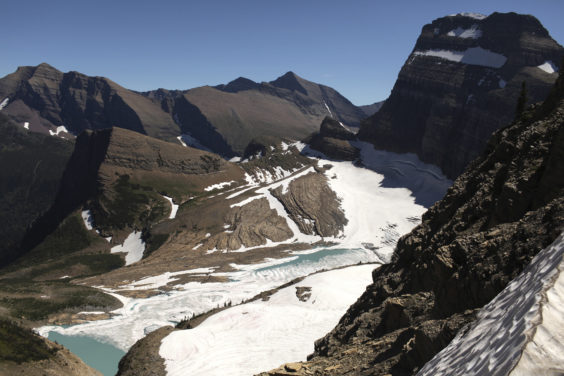
View from atop the Grinnell Glacier Overlook trail in Glacier National Park, Montana August 24, 2011. REUTERS/Matt Mills McKnight (UNITED STATES – Tags: ENVIRONMENT TRAVEL SOCIETY) – RTR2QKAJ
Glaciers will disappear from mainland U.S. in our lifetime, scientists say
(PBS Newshour) Of the estimated 150 glaciers that existed when Glacier National Park was created in Montana back in 1910, only 26 remain. That’s according to a study released Wednesday by the U.S. Geological Survey and Portland State University.
The researchers warn the formations are disappearing so quickly that the lower 48 states will have no more glaciers before the turn of the century. The average glacier shrank 39 percent in a 50 year period, with some shrinking as much as 85 percent.
22 April
What Americans Really Think About Climate Change
Polls and studies reveal it’s the long, tiring grind that changes opinions about global warming.
(The Atlantic) A lot of people know about climate change, and a lot of people think it is generally bad. But they do not change their votes because of it. Americans may change their vote because of economic fear, or defense policy, or to protect their property or social privileges. But they do not vote because the ice caps are melting. This is the heart of the climate issue.
19 April
Our Climate Future Is Actually Our Climate Present
How do we live with the fact that the world we knew is going and, in some cases, already gone?
By JON MOOALLEM
(NYT Magazine) Even as most credible scientific estimates keep increasing and the poles melt faster than imagined, those estimates currently reach only between six and eight feet by the year 2100. That’s still potentially cataclysmic: Water would push into numerous cities, like Shanghai, London and New York, and displace hundreds of millions of people. And yes, there are some fringe, perfect-storm thought experiments out there that can get you close to 200 feet by the end of the century.
The future we’ve been warned about is beginning to saturate the present. We tend to imagine climate change as a destroyer. But it also traffics in disruption, disarray: increasingly frequent and more powerful storms and droughts; heightened flooding; expanded ranges of pests turning forests into fuel for wildfires; stretches of inhospitable heat. So many facets of our existence — agriculture, transportation, cities and the architecture they spawned — were designed to suit specific environments. Now they are being slowly transplanted into different, more volatile ones, without ever actually moving.
Some communities will face new problems and varieties of weather; in others, existing ones will intensify. Already-vulnerable societies — the poor, the poorly governed — may be stressed to grim breaking points. Consider the mass starvation in South Sudan, Nigeria, Yemen and Somalia, where a total of nearly a million and a half children are predicted to die this year — and that climate change is projected to worsen the kind of droughts that caused it.
Scenarios that might sound dystopian or satirical as broad-strokes future projections unassumingly materialize as reality. Last year, melting permafrost in Siberia released a strain of anthrax, which had been sealed in a frozen reindeer carcass, sickening 100 people and killing one child. In July 2015, during the hottest month ever recorded on earth (until the following year), and the hottest day ever recorded in England (until the following summer), the Guardian newspaper had to shut down its live-blogging of the heat wave when the servers overheated. And low-lying cities around the world are experiencing increased “clear-sky flooding,” in which streets or entire neighborhoods are washed out temporarily by high tides and storm surges. Parts of Washington now experience flooding 30 days a year, a figure that has roughly quadrupled since 1960. In Wilmington, N.C., the number is 90 days. But scientists and city planners have conjured a term of art that defuses that astonishing reality: “nuisance flooding,” they call it.
8 April
Kim Stanley Robinson’s New York 2140 is a glorious thought experiment on climate change
An excellent look at the relationship between capitalism and rising sea levels
In his latest novel, New York 2140, Robinson takes a look at the future of the planet as sea levels rise due to a warming climate and the changes civilization needs to make in order to survive. It’s surreal to be reading this book right now, especially against the backdrop of the Trump administration’s dismissal of the dangers that climate change poses. There’s already a number of fairly bleak novels out there about the affects of climate change. (Look no further than Paolo Bacigalupi’s excellent novels The Windup Girl and The Water Knife.) But Robinson’s book feels like the most optimistic take on our future yet. Sure, the water levels will rise, the Earth is going through a mass extinction event, and a lot of people will die as a result, but when things get really bad, society, he seems to suggest, can still manage to survive.
Robinson imagines a world where humanity doesn’t react in time to slow down climate change. In 2140, New York City is the new Venice, with canals replacing its streets, and people going about their lives in this new world. Robinson depicts that life with a multitude of characters, all of whom come together around the building that they all inhabit, Manhattan’s MetLife Tower.
18 February
Heavy Rain and Snow Pound California, Raising Mudslide Risk
(Fortune) The severe storm could bring California’s heaviest rainfall in six years, after months of wet weather that has dramatically eased California’s years-long drought. The heavy rain and melting snowpack threatened to undermine a spillway at one of the largest dams in the country, which prompted the evacuation of 188,000 residents earlier this week.
What the Oroville Dam Disaster Says About America’s Aging Infrastructure
This past week, heavy winter rain caused a 250-foot-long section of northern California’s Oroville Dam’s principal spillway to collapse. In response, state officials began releasing water from an adjacent emergency spillway, leading to the unexpected and rapid erosion of the ground below and the evacuation of 180,000 residents from their homes.
The crisis, which exposed glaring weaknesses with the dam complex, also carries an important lesson for the nation: Increasingly, extreme weather driven by climate change is placing substantial stress on America’s aging infrastructure.
13 February
California’s Oroville Dam threatens floods, forcing nearly 200,000 people to evacuate under emergency order
(WaPost via National Post) The water level in the lake rose significantly in recent weeks after storms dumped rain and snow across California, particularly in northern parts of the state. The high water forced the use of the dam’s emergency spillway, or overflow, for the first time in the dam’s nearly 50-year history on Saturday.
7 February
Man points camera at ice – then captures the unimaginable on film
In less than an hour and 15 minutes, [American photographer James] Balog and his team and saw a piece of glacier the size of the Lower Manhattan fall into the ocean.
The incident took place in Greenland, where James and his mates were gathering images from cameras that had been deployed around the Arctic Circle over the years
As far as anyone knows, it was an unprecedented geological disaster. Unfortunately, though, it’s unlikely to be the last one of its kind.
In November 2016, the Arctic was 20 degrees warmer than average, which is much warmer than even research models had predicted.
